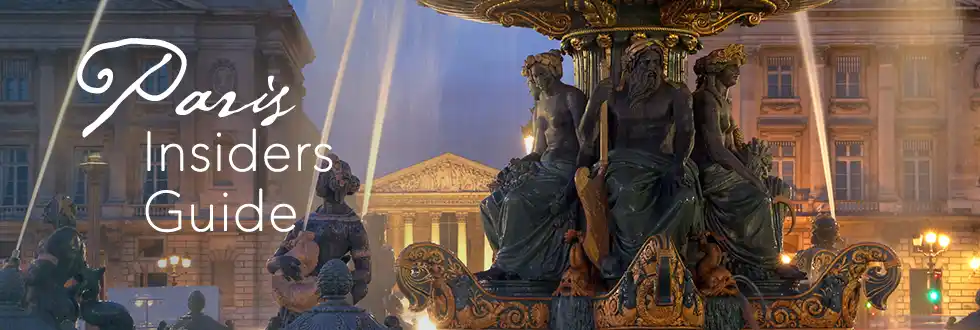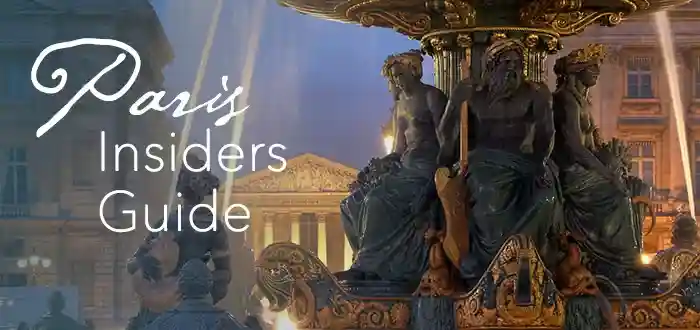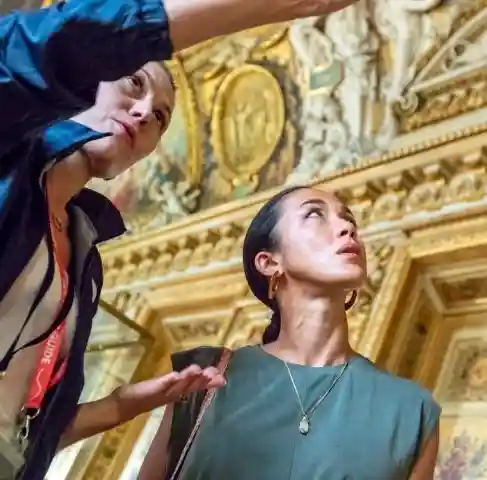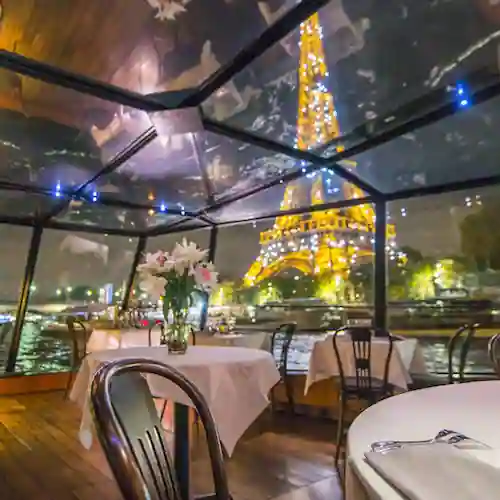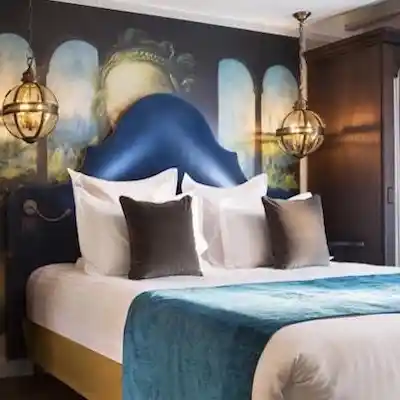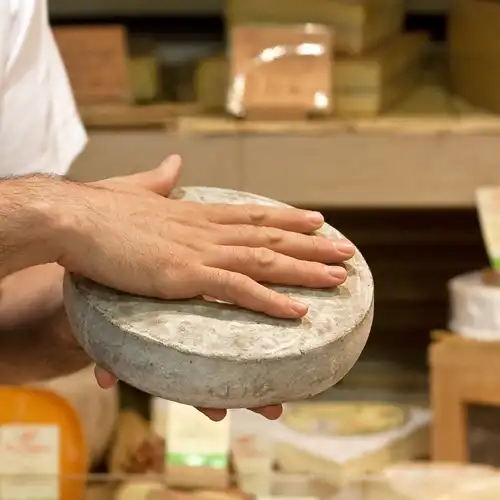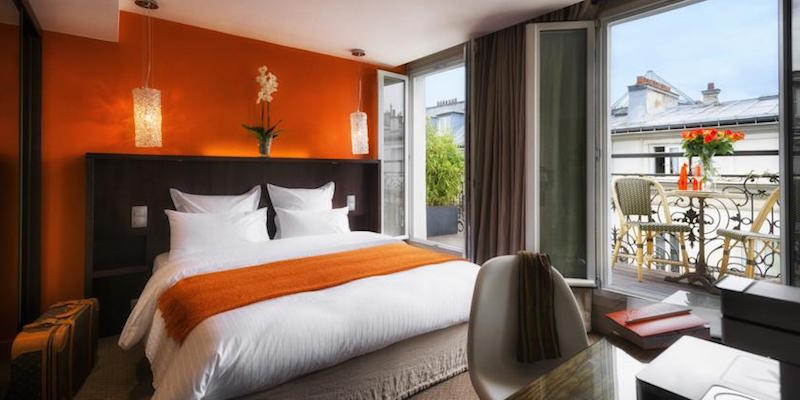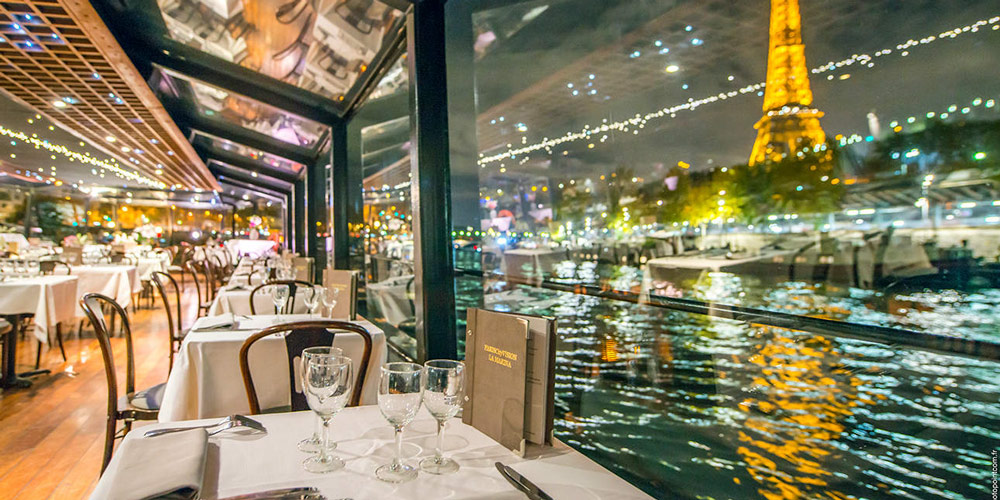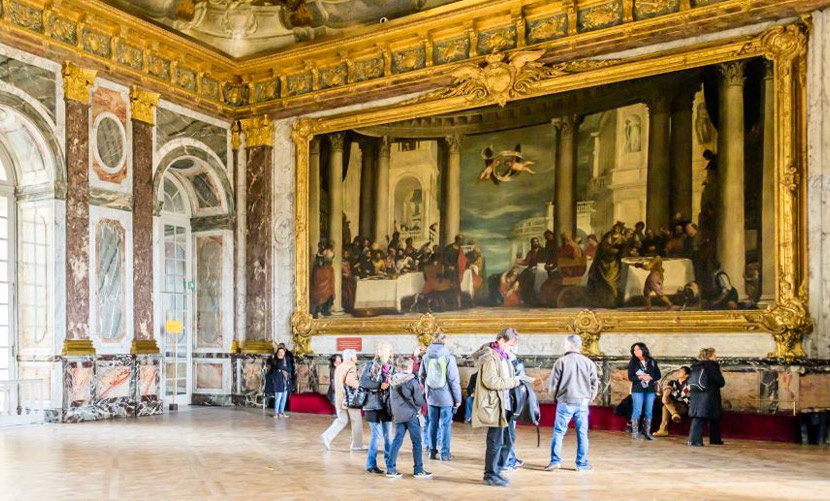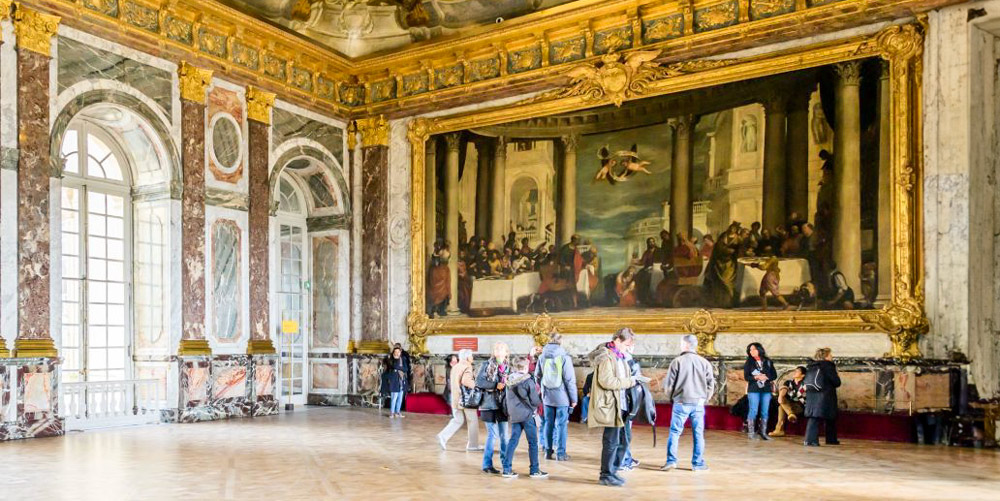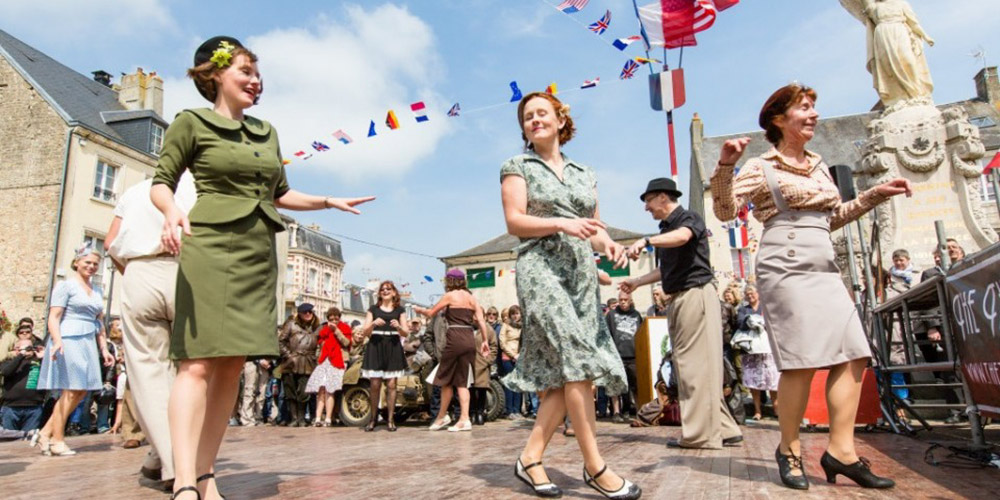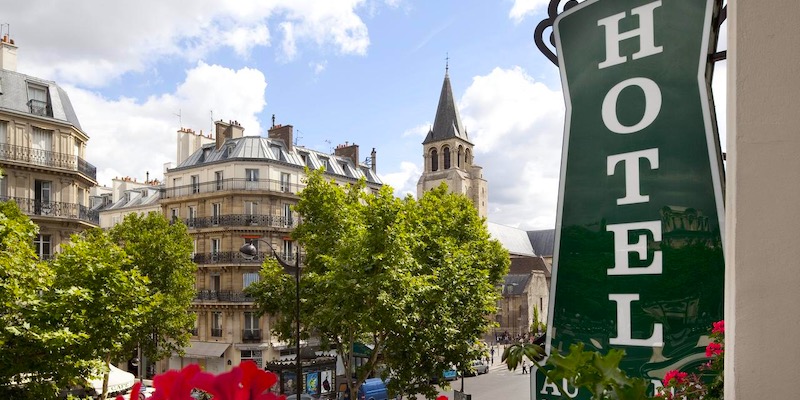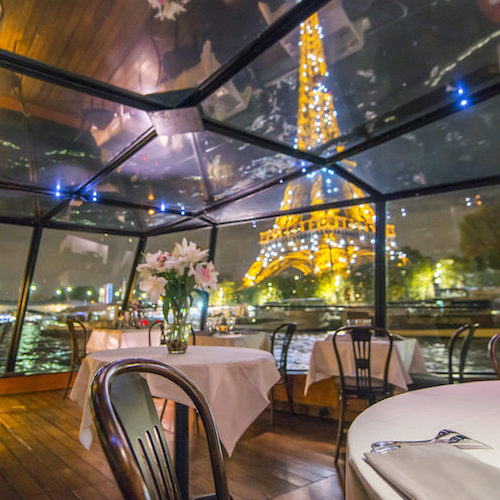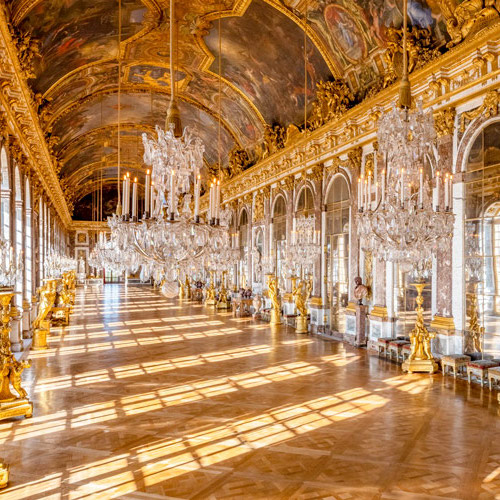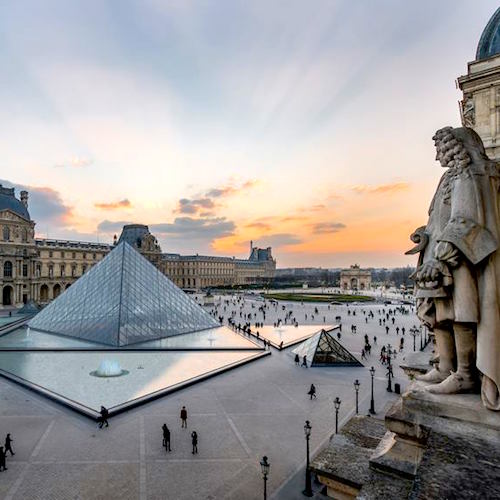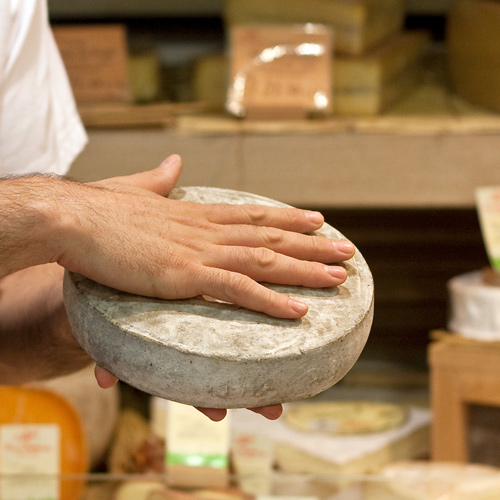Impressionism Timeline 1851-1900 – The Birth Of An Art Movement
The art movement heard round the world — Impressionism — didn't develop in a vacuum. It was part of a slowly-moving change to French culture and tastes in the latter half of the 19th century that included things like the rebuilding of Paris, Realism, a war & a socialist revolution, Art Nouveau, France's last emperor, and even the Eiffel Tower. Let's take a brief look at what happened between 1851 and 1900, the period when Impression rose to artistic prominence.
![]()
Our Top-Rated Museum Tours in Paris
1. Louvre 2-Hour VIP Tour… This small-group option is the best experience
2. 3-Hour Louvre Semi-Private Tour… Feel like a VIP on a small group tour
3. Musée d'Orsay Impressionist Tour… The top-rated museum tour in Paris
4. The Paris Museum Pass… Free entry to over 60 museums and monuments
– 1851 –
Jean-François Millet Exhibits The Sower at the Paris Salon
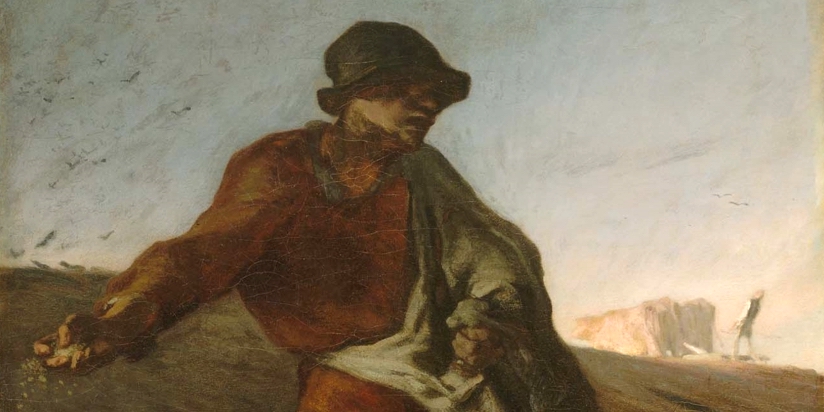
Millet, a founder of the Barbizon school of painters, helped to develop en plein air landscape painting, a technique that greatly influenced the Impressionists who followed. Vincent van Gogh respected Millet greatly and although he never did see The Sower (it was already in a private collection before Vincent was born in 1853) van Gogh emulated Millet's style in his version of La Méridienne, which today can be seen at the Musée d'Orsay in room 71 (detail above).
Universal Exposition Held at London's Crystal Palace
The brainchild of Prince Albert (you know, husband of Queen Victoria), the London exposition was the first World's Fair, with exhibitions heralding the latest advances in culture and industry. It ignited a bevy of other expositions, especially in Paris, throughout the 19th and early 20th centuries.
![]()
Discover What's On When You're Here...
• January... |
• February... |
• March... |
• April... |
• May... |
• June... |
• July... |
• August... |
• September... |
• October... |
• November... |
• December... |
Discover What's On When You're Here
• January...
|
• February... |
• March... |
|---|---|---|
• April... |
• May... |
• June... |
• July... |
• August... |
• September... |
• October... |
• November... |
• December... |
Gustave Courbet's A Burial at Ornans Creates a Scandal
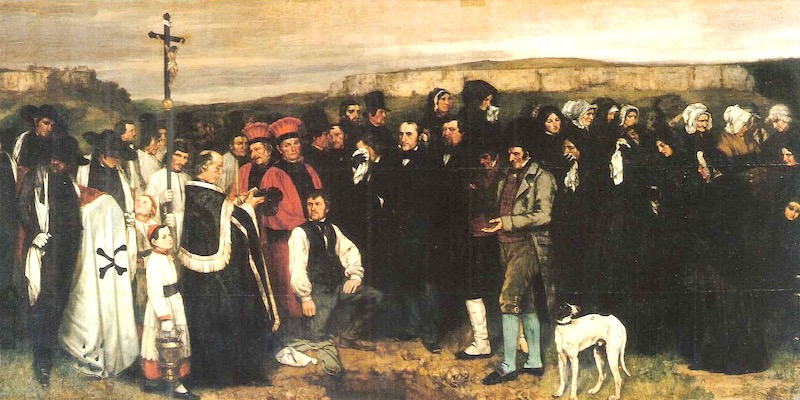
In 1849 Gustave Courbet started work on his first monumental painting,taking inspiration from Dutch group portraits of the 17th century. His approach was innovative — he used a huge canvas, normally reserved for historical paintings, to showcase a mundane, ordinary funeral.
Courbet treated the provincial funeral with unflattering realism and on a large scale traditionally reserved for heroic and religious scenes. Displayed at the Paris Salon of 1851, the painting was panned — with the exception of one critic who predicted it would become a pillar of a new wave of realism. In fact, it is now considered a turning point of 19th-century art. See it in room 7 at Musée d'Orsay.
![]()
|
Browse our hand-picked Paris hotel deals with real-time discounts of up to 20%. Stay in the Marais, Saint Germain, the Latin Quarter, the Left Bank near the Eiffel Tower… every arrondissement is on the list. |
|
Browse our hand-picked Paris hotel deals with real-time discounts of up to 20%. Stay in the Marais, Saint Germain, the Latin Quarter, the Left Bank near the Eiffel Tower… every arrondissement is on the list. |
– 1852 –
Louis-Napoleon Bonaparte Becomes Napoleon III
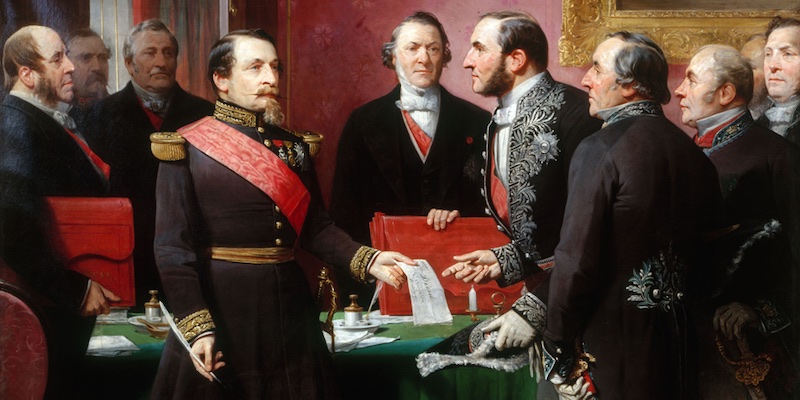
Napoleon III, nephew of Napoleon Bonaparte and a self-proclaimed emperor in his own right, did a lot of things right, including a massive renovation of Paris, working with his right-hand man Baron Haussmann. (Above, in a painting by Adolphe Yvon, Napoleon III receives the plan of Paris from Haussmann. The emperor's the one with the weird beard.)
Napoleon III also launched many public works projects in other French cities like Marseille and Lyon, modernized the banking system, expanded the railways, and transformed the merchant marine into the second largest in the world. Under Napoleon III's reign the first women students were admitted to the Sorbonne and education was expanded in public schools.
It was just too bad about that nasty war with Prussia. In July 1870 Napoleon declared war on the Prussians, without allies and with insufficient military force. The French army was quickly defeated, with Napoleon III captured at the Battle of Sedan. Paris was besieged and the emperor fled to England, where he died in 1873, a year before the first Impressionist exhibition.
![]()
|
Paris Dinner Cruises on the Seine Dine in style as you glide past the Eiffel Tower, Notre-Dame, and the Louvre on a magical Seine River cruise. Gourmet food, champagne, and Paris lit up at night – it’s unforgettable. |
|
Paris Dinner Cruises on the Seine Dine in style as you glide past the Eiffel Tower, Notre-Dame, and the Louvre on a magical Seine River cruise. Gourmet food, champagne, and Paris lit up at night – it’s unforgettable. |
– 1854 –
Gustave Courbet Invents Realism
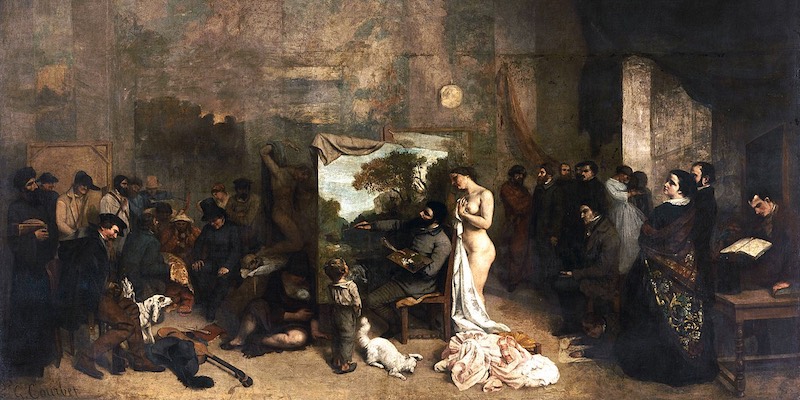
Still tearing up the art world, Courbet began to lead the new Realism movement, committed to painting only what he can see while rejecting the idyllic vision of the Romantics of the previous generation. Courbet became an important influence on the Impressionists.
At Musée d'Orsay, in room 7, you can view one of Courbet's monumental 1854 canvases — The Artist's Studio, subtitled A real allegory summing up seven years of my artistic and moral life.
Baron Haussmann Begins the Renovation of Paris
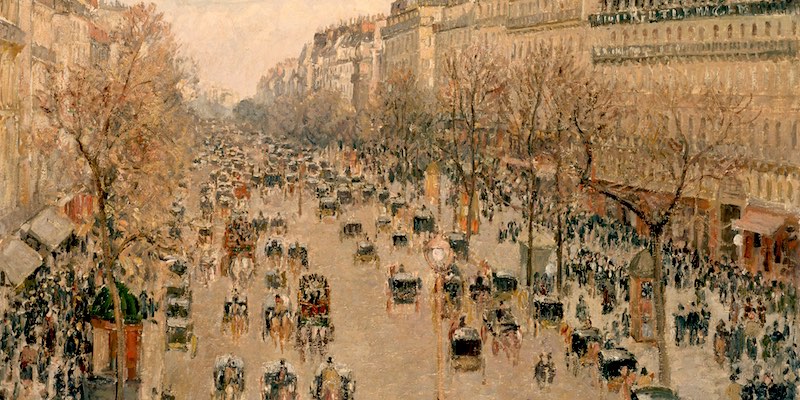
When Napoleon III came to power Paris was pretty much still a medieval city — overcrowded, dingy, dirty, and riddled with outbreaks of cholera. Napoleon III wondered why Paris couldn't be more like London with its grand parks, gardens, tree-lined avenues, and modern sewage system. In his opinion, Paris needed light, air, clean water, and good sanitation.
To effect change, the emperor gave Baron Haussmann free reign to cut swathes through the labyrinth of city slums, knocking down some 12,000 buildings and clearing space for wide, straight boulevards, for the Palais Garnier, for new train stations, for new parks, and a brand new sewer and water system. Construction would continue through nearly forty years, outlasting Haussmann and Napoleon himself.
The Impressionist painters were to love the new Paris, painting scenes of the renewed city, including Pissarro's painting of the new Boulevard Montmartre, above.
![]()
|
Escape to the Land of Bubbly on a small-group day tour from Paris. Taste at top Champagne houses, meet boutique producers, enjoy a leisurely lunch, and toast to a perfectly sparkling day. |
|
Escape to the Land of Bubbly on a small-group day tour from Paris. Taste at top Champagne houses, meet boutique producers, enjoy a leisurely lunch, and toast to a perfectly sparkling day. |
– 1857 –
Realist Painter François Bonvin Opens His Studio
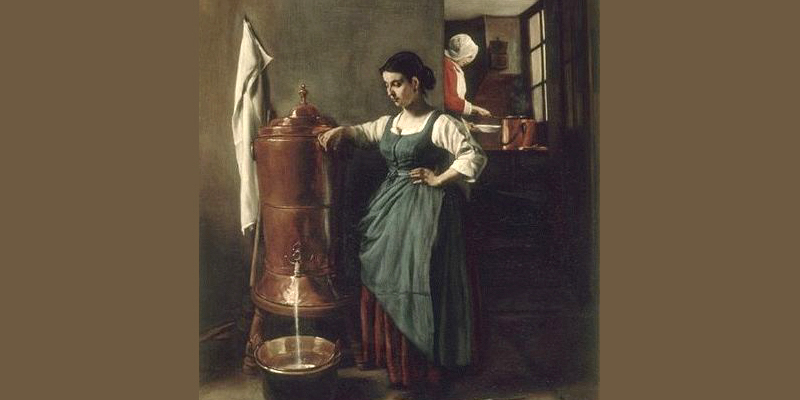
In addition to his own work, Bonvin also displayed paintings that had been rejected by the Salon, including artists like Fatin-Latour and Whistler. Nine of Bonvin's works can be viewed at Musée d'Orsay, among them La Fontaine en Cuivre: Intérieur de Cuisine, shown above.
But perhaps the biggest art news of 1857 was an innovation that would greatly aid the Impressionists — paint tubes with screw-on tops were introduced in France.
– 1859 –
Ingres Unveils His Masterpiece, The Turkish Bath
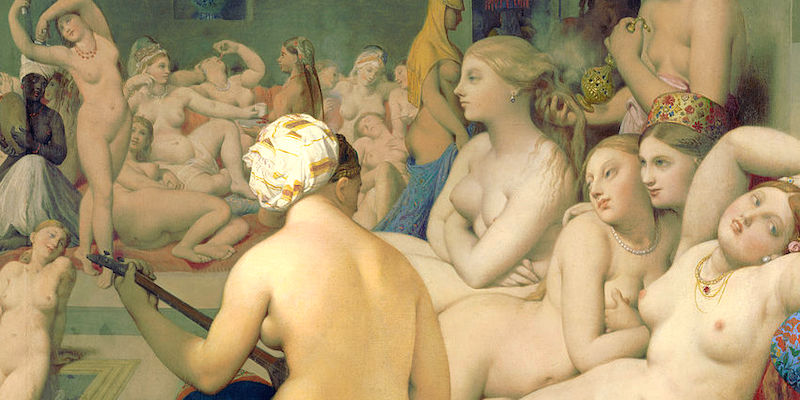
First purchased by a relative of Napoleon III, The Turkish Bath was returned a few days later — the lady of the family deeming it unsuitable for her parlor. It was subsequently purchased a few years later by Khalil Bey, a Turkish diplomat and playboy who added it to his collection of erotic paintings. (Although first completed in 1859, Ingres modified the painting in 1862, when he was 82 years old, to the existing round version.) Edgar Degas, soon to be a force among Impressionists, lobbied for it to be shown at the Paris Exposition Universelle of 1855 (even before Ingres would have signed off on the first version). The Turkish Bath now hangs in the Louvre. (Detail shown above.)
![]()
Our Top-Rated Paris Experiences
The Death of Delacroix
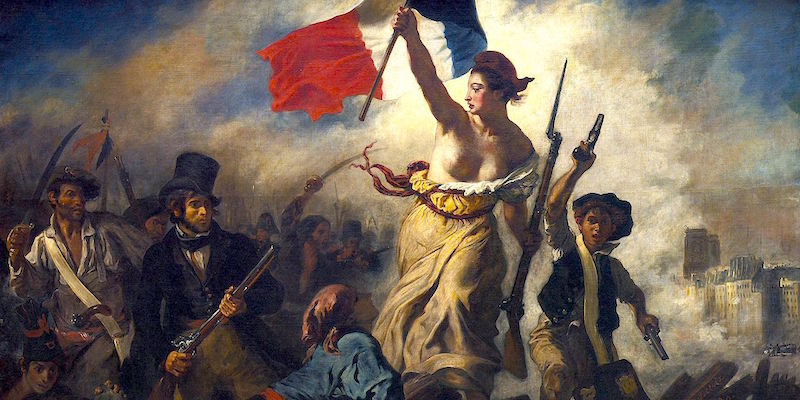
Eugène Delacroix revolutionized 19th-century painting and shaped the future of art. In his role as mentor he strongly influenced the styles of Impressionist artists like Edgar Degas, Paul Gauguin, Vincent van Gogh, Henri Matisse, Claude Monet, and Pierre-Auguste Renoir.
Today there are five works by Delacroix at Musée d'Orsay (such as The Lion Hunt, found in room 15), but his most famous work, Liberty Leading the People (shown) is at the Louvre.
La Gazette des Beaux-Art Begins Publication
This French art review journal would become an important reference work on art and art history for over 100 years, until it ceased publication in 2002.
![]()
|
Trade Paris bustle for royal grandeur on a guided Versailles tour. Skip the lines, wander the gardens, and peek inside Marie Antoinette’s private estate. History never looked this good. |
|
Trade Paris bustle for royal grandeur on a guided Versailles tour. Skip the lines, wander the gardens, and peek inside Marie Antoinette’s private estate. History never looked this good. |
– 1860 –
Nadar Opens His Photography Studio
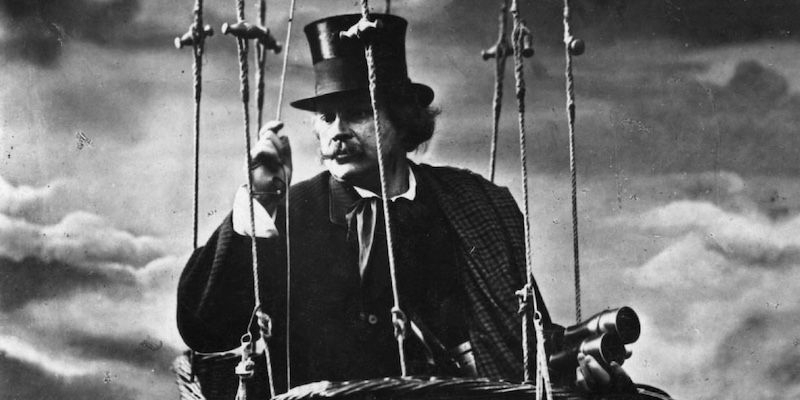
The Paris bohemian, journalist, photographer, and hot air balloonist Gaspard-Félix Tournachon — who went by the name of Felix Nadar — opened his studio on Boulevard des Capucines. It was here, fourteen years later, that the Impressionists would stage their first exhibition.
– 1863 –
Le Salon des Réfuses
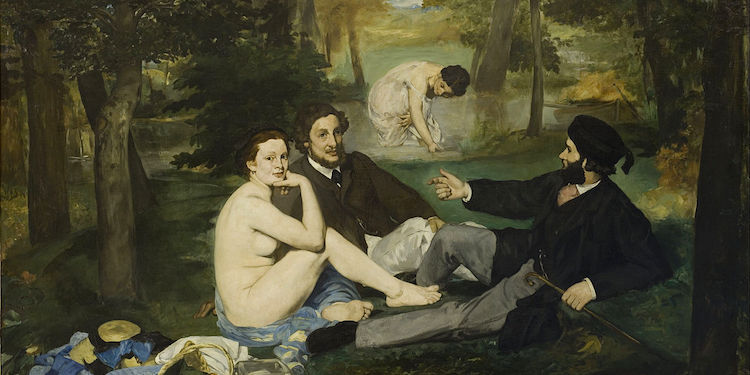
An alternative to the Salon, comprised of works rejected by the official exhibition, featured Manet's groundbreaking Le Déjeuner Sur l'Herbe. Critics and the public jeer and laugh (mostly!).
Meanwhile, Cezanne and Rodin were rejected by the Salon. Le Déjeuner Sur l'Herbe (in room 29) and forty-eight other works by Manet can be seen at Musée d'Orsay.
![]()
Delectable Food Tours in Paris
|
Discover the Food & Wine of the Marais |
Cheese & Wine Tasting in a Paris Cellar |
|
Cheese & Wine Tasting in a Paris Cellar |
– 1864 –
Monet Paints His Le Déjeuner Sur l'Herbe As a Tribute to Manet
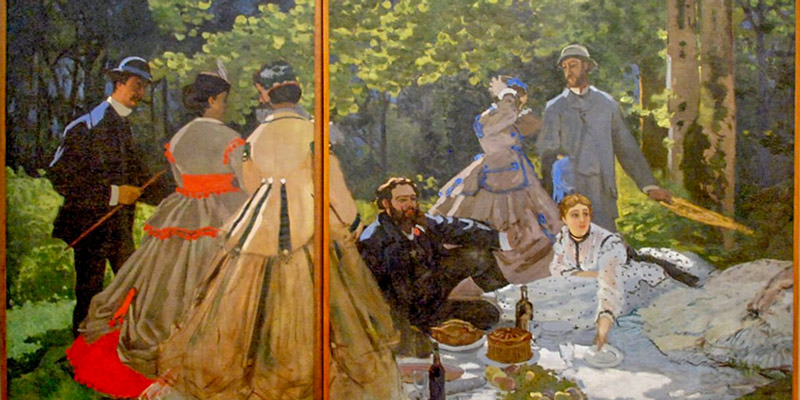
Completed en plein air in the Fountainebleau Forest, Monet first sketched this painting and started work on the canvas in the studio. He never displayed the complete painting. Reports vary — it was too large to submit to the Salon; Monet became frustrated; Monet had the painting in storage where it was damaged by moisture. Whatever the cause, Monet himself cut the painting into large pieces, probably in 1884. Today two of the pieces can be seen at Musée d'Orsay in Room 29. (Rumor has it that one or two additional fragments are located in other museums.) By the way, Gustave Courbet appears (seated) in the painting.
War and Peace by Tolstoy is Published
War and Peace, that masterwork of Russian literature, is considered one of history's greatest novels. A panoramic study of 19th-century Russian society, it's known for its rich detail and psychological drama, themes also taken up by forward-thinking painters of the era.
– 1865 –
Manet's Olympia Creates Another Scandal
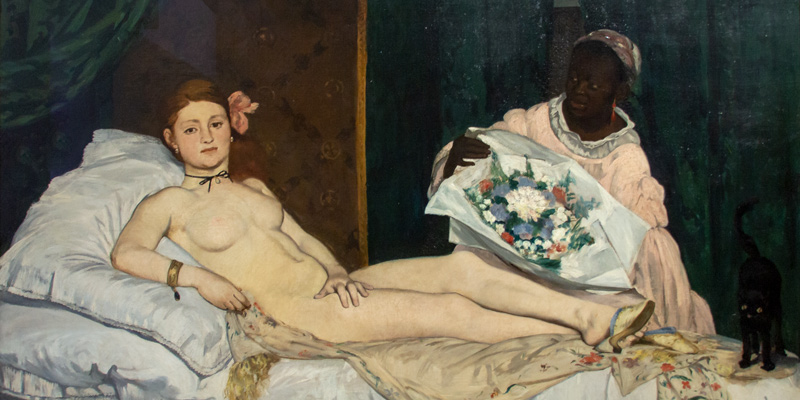
For the Salon for 1865, somehow Manet's nude, Olympia, slipped through the selection committee and was hung among the more conservative works usually found there, precipitating another scandal. In the years to follow, after Manet's death (1883), it was Claude Monet who championed the painting, eventually getting it hung in the Musée du Luxembourg. View it today at Musée d'Orsay in room 14.
– 1867 –
Death of Charles Baudelaire
The French poet's most famous work, Les Fleurs du Mal, described real life in modern, industrialized Paris during the mid-19th century. Baudelaire referred to Delacroix as a "a poet in painting". When Manet's controversial portrait of Olympia as a nude prostitute provoked scandal, Baudelaire supported him as well. After Baudelaire suffered a stroke, Manet and his wife Suzanne were frequent bedside visitors.
Jean-François Millet Resigns from the Salon Jury
Millet had had enough of the conservative jury and, after it had rejected Monet, Bazille, and Cezanne in one swoop, Jean-François resigned, striking a blow for the new generation of artists.
![]()
Go Deeper Into France: Day Trips From Paris
|
Small-Group Loire Valley Chateaux & Wine Tasting Trip from Paris |
Mysterious Mont Saint-Michel |
|
Small-Group Loire Valley Chateaux & Wine Tasting Trip from Paris |
– 1870-1871 –
The Franco-Prussian War & the Paris Commune
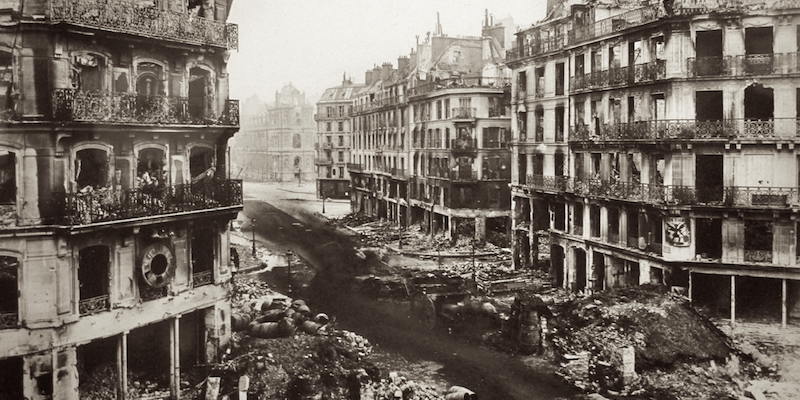
Before all of his grand dreams for Paris could be completed, Napoleon III fought an ill-advised war against Prussia in 1870 that led to his downfall. After being humiliated by the Prussian army, Napoleon III abruptly resigned in September 1870 and the Prussians laid siege to the city.
The siege lasted four months and was a disaster for Parisians, including the group of Impressionist artists, who either fled France (like Monet) or worked at the barricades during the siege (like Manet). Paris surrendered, accepting terms that angered many. A socialist, revolutionary government called the Commune seized power in Paris, forcing the government (called "The Third Republic") to move out to Versailles.
The Paris Commune lasted only two months, but the period was marked by further death and destruction. The Hotel de Ville and the Tuileries Palace were destroyed, and in the end 20,000 were dead with 40,000 arrested or deported. Paris ended up in a shambles.
Gustave Courbet Imprisoned
A defiant supporter of the Paris Commune, Courbet was held responsible for the destruction of the Vendôme Column during the Commune's brief reign. After the defeat of the Commune mobs by government forces, Courbet was locked up in the stables of Versailles before a six-month stay in prison. Following his release (1872), Courbet lived in exile in Switzerland until his death. Courbet, as a painter, was admired by many contemporary artists, including Claude Monet.
The Death of Bazille
Promising painter Jean Frederic Bazille (1841-1870) died in battle during the Franco-Prussian war. The son of a wealthy family, his parents allowed him to paint only if he also studied medicine. You can view his La Robe Rose in room 18 of Musée d'Orsay.
– 1874 –
First Exhibition by the Anonymous Cooperative Society of Artists
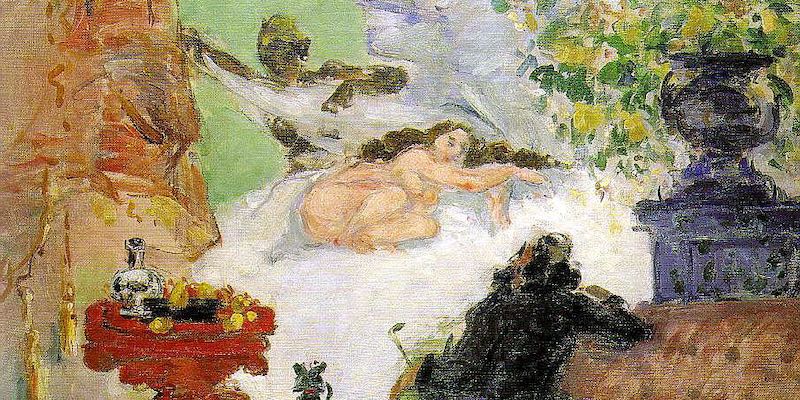
Despite the indecipherable name, this was, in fact, the first of eight exhibitions of Impressionist work. Staged cooperatively, the show was led by Claude Monet, Edgar Degas, Pierre-Auguste Renoir, Camille Pissarro, and Berthe Morisot. At Musée d'Orsay view Paul Cézanne's A Modern Olympia (above), first shown at the 1874 exhibition.
A New Paris Opera House Opens
Built by Charles Garnier, Palais Garnier (as it came to be called) was finally inaugurated after fifteen years of on-again, off-again construction. (Thanks largely to the disturbances caused by the Paris Commune).
![]()
|
Taste Your Way Through The Marais Stroll the cobbled streets of the Marais while tasting your way through cheese shops, bakeries, wine cellars, and hidden gems. A local expert leads the way — and keeps the wine flowing. |
|
Taste Your Way Through The Marais Stroll the cobbled streets of the Marais while tasting your way through cheese shops, bakeries, wine cellars, and hidden gems. A local expert leads the way — and keeps the wine flowing. |
Impressionism Timeline 1876-1900
![]()
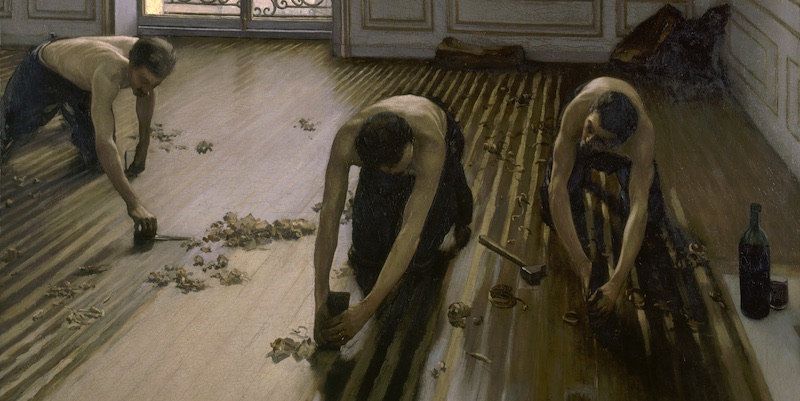
![]()
1876
Second Impressionist Exhibition. Held at the Durand-Ruel Gallery, where twenty painters exhibit two hundred fifty pieces. Gustave Caillebotte, presents The Floor Planers to high acclaim. (Photo above, found at Musée d'Orsay in room 71.)
1877
The History of the Impressionist Painters is Published. The first book about Impressionism, written by Theodore Duret.
Third Impressionist Exhibition. Monet debuts his Gare St Lazare paintings (room 31 at Orsay), Degas exhibits Women on a Café Terrace, and Renoir brings Le Bal du Moulin de la Galette (room 30).
Gustave Courbet Dies. In exile in Switzerland Courbet learned he had been ordered to pay nearly 330,000 francs, the cost of replacing the Vendôme Column. Given the option of paying 10,000 francs a year for the next 33 years, Courbet elects to die from liver damaged caused by heavy drinking.
1878
Le Quatorze Est Arrive. July 14 is proclaimed a national holiday and La Marseillaise becomes France's national anthem.
1879
Fourth Impressionist Exhibition. Missing are Cezanne, Renoir, Morisot and Sisley. The show draws a huge crowd and features new talent Paul Gauguin. Monet presents Garden at St. Adresse and Rue Montogrueil, 30th of June 1878.
Rodin Finishes The Thinker.
Tricolor Adopted as the French National Flag.
![]()
The Best Evenings in Paris
|
Dinner & Cabaret at the Moulin Rouge |
VIP Dinner Cruise with Bateaux Parisiens |
|
Dinner & Cabaret at the Moulin Rouge |
![]()
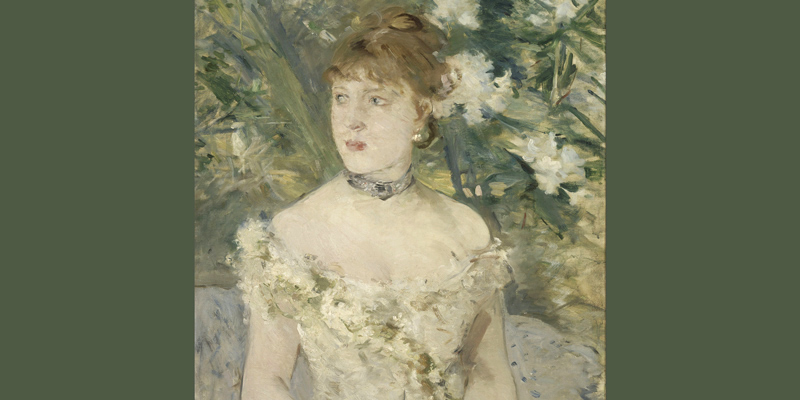
![]()
1880
Fifth Impressionist Exhibition. Missing is Claude Monet, who is trying his luck at the Salon. Mary Cassatt shows Five O'Clock Tea, Gauguin debuts a marble bust of his wife, Mette, and Berthe Morisot exhibits Summer and Woman at her Toilette (shown above).
Le Chat Noir Cabaret Opens In Montmartre. It's the first modern cabaret, and it also publishes a weekly magazine with poetry, news about Montmartre, and political satire.
1881
Courbet Retrospective at the École des Beaux Arts. Despite falling into disgrace at the end of his life, Courbet's reputation as a painter was restored by this show.
The Sixth Impressionist Exhibition. It was decidedly a Degas show as many of the other artists stepped down. The exhibit returned to Nadar's studio with thirteen artists exhibiting one hundred seventy works. Degas debuted Petite Danseuse de 14 Ans (now found in room 31 at d'Orsay).
![]()
|
D-Day Beaches Day Trip from Paris Take a powerful day trip from Paris to Normandy’s D-Day beaches. Walk the sands; visit key landing sites, museums, and cemeteries; and honor the heroes who changed the course of history. |
|
D-Day Beaches Day Trip from Paris Take a powerful day trip from Paris to Normandy’s D-Day beaches. Walk the sands; visit key landing sites, museums, and cemeteries; and honor the heroes who changed the course of history. |
![]()
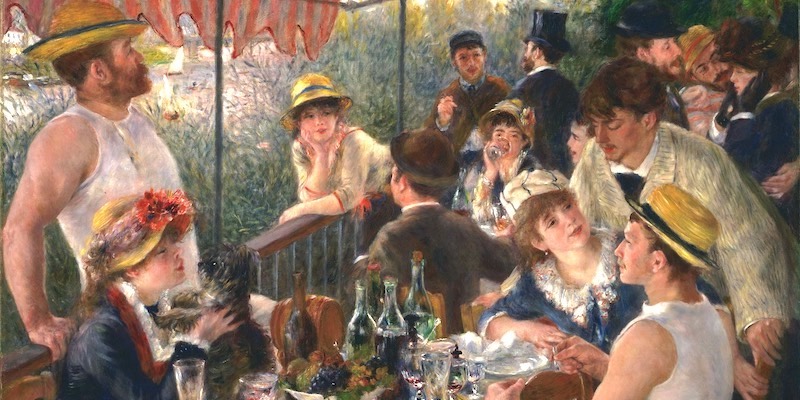
![]()
1882
Seventh Impressionist Exhibition. Monet, Sisley, and Caillebotte returned for this show, but absent were Degas, Cassatt, and others. Renoir debuted one of his masterworks, The Luncheon of the Boating Party (detail shown above), Monet showed Sunset on the Seine, Winter Effect, now at the Petit Palais.
1883
Zola Publishes The Masterpiece. This tragic novel followed Claude Lantier, an ambitious artist who comes to conquer Paris but is instead conquered by his own flaws. Set in the late 1800s, it was Zola's most autobiographical work. It provided insight into Zola's career as a writer and his relationship with Cezanne, friends since they were schoolboys in Aix-en-Provence. It also depicted a realistic account of the turbulent Bohemian world of the Impressionists.
Manet Dies. Beginning in his forties Manet's health went downhill as he developed pain and partial paralysis in his legs. He began hydrotherapy treatment to improve what he believed to be a circulatory problem. In reality he was suffering from the long-term side effects of syphilis. In 1882 he finished his last major work, Un Bar aux Folies-Bergère. A year later his left foot was amputated due to the complications of syphilis. He died days later on April 30, 1883 and was buried in Passy Cemetery.
Monet Moves to Giverny. In May 1883, Monet and his large family rented a house and two acres in Normandy, between the towns of Vernon and Giverny. A barn on-site doubled as a studio. The orchards, garden, and landscape at Giverny offered Monet endless options for paintings. As his family transformed the gardens, Monet's fortunes also changed for the better when his dealer, Paul Durand-Ruel, began selling his paintings. By 1890 Monet was prosperous enough to buy the house, the buildings, and the land. The rest, as they say, is (art) history.
1886
Eighth and Final Impressionist Exhibition. Degas, Cassatt, Zandomeneghi, Gauguin, Monet, Renoir, and Pissarro were all represented. Post-Impressionism also made its debut with Georges Seurat's Sunday Afternoon on the Island.
1890
Vincent van Gogh Dies. It happened in Auvers-sur-Oise, the result of a gunshot wound to his abdomen. On his death bed he seemed to reveal that he shot himself. But did he? Experts now reject this claim and suggest van Gogh was murdered by a 16-year-old schoolboy.
Oscar Wilde's The Picture of Dorian Grey is Published. The only novel written by Wilde, it was first published serially in a monthly magazine. The editor, fearing the story was indecent, deleted sections before the publication without Wilde's knowledge. Despite the editing, the novel still managed to offend the stuffy British book reviewers. Wilde would die in Paris ten years later, disgraced and broken.
![]()
|
From Paris to Provence, Burgundy to Bordeaux, find hotel deals with current sale prices. Save up to 20% in cities, villages, beach towns, and storybook countryside escapes. |
|
Discover today's sale prices on hotel rooms in every village & city in France. Save up to 20%. Find hotels in Paris, Burgundy, Provence, the Loire Valley, Normandy, and everywhere else! |
![]()
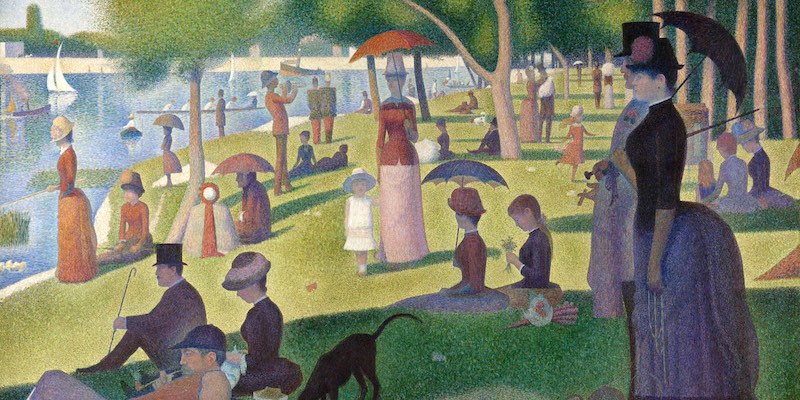
![]()
1891
George Seurat Dies at 31. French post-Impressionist artist Seurat is best known for the painting technique called pointillism. A Sunday Afternoon on the Island of La Grande Jatte was a revolution in late 19th-century painting. (Shown above.) Seurat died of pneumonia; his young son followed him two weeks later.
1895
Caillebotte's Art Collection. Independently wealthy, Gustave Caillebotte lived in luxury and enjoyed nothing more than buying paintings from his friends, the Impressionists. That's how he ended up with one of the great treasure chests of Impressionist art. When he died at age 45 the vast collection was bequeathed to the French state. We have Caillebotte (pronounced KY-bot) to thank for the tremendous set of Impressionist paintings, most of which are now at d'Orsay. (By the way, that's him in the straw hat in The Luncheon of the Boating Party.)
Castel Beranger Completed. The first Art Nouveau building, by Hector Guimard, was finished in 1895. You can visit the historic building at 14 Rue La Fontaine in the 16th Arrondissement. Guimard would go on to lasting fame for designing the original Paris Metro entrances.
1897
Zola Publishes J'Accuse. The most famous moment in the history of journalism started with a one-word headline — J'Accuse! On January 13, 1898, Emile Zola's 4,000-word letter was published, decrying the injustice of the Dreyfus Affair in which innocent army captain Alfred Dreyfus was convicted of treason and sentenced to lifetime solitary confinement on Devil's Island.
At the time Zola was the most popular writer in France and his essay defending Dreyfus and accusing the court and government of a cover-up electrified the nation and reverberated around the world. At its core was anti-semitism — Dreyfus was Jewish and the press was fueling the hysteria. It gives a clue of what was to come with the Vichy government and their collusion with the Nazi invaders during World War II.
1898
Rodin's Monument to Balzac Creates Scandal at the Salon. When Rodin presented his Balzac statue at the Salon it was not received well by the critics. Rodin took the negativity as a personal attack. Regardless of rejection and the criticism, Rodin's contemporaries — Paul Cezanne, Toulouse-Lautrec, and Claude Monet — supported him with a petition signed by many in the artistic community.
![]()
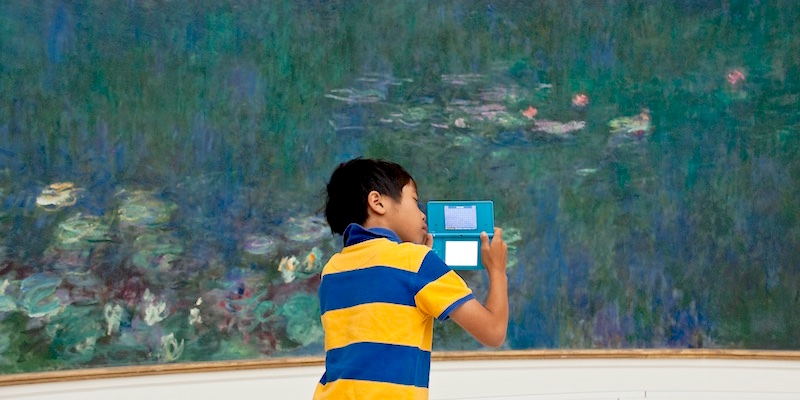
![]()
1900
Monet Begins His Water Lilies Series. The mammoth series of 250 paintings depicting Monet's pond and gardens at his home in Giverny became the focus of his artistic career for the last twenty-five years of his life. Now seen in glory at Musée de l'Orangerie.
Paris Planning Guides
 Latin Quarter Hotels
Latin Quarter Hotels |
 VIP to Champagne
VIP to Champagne |
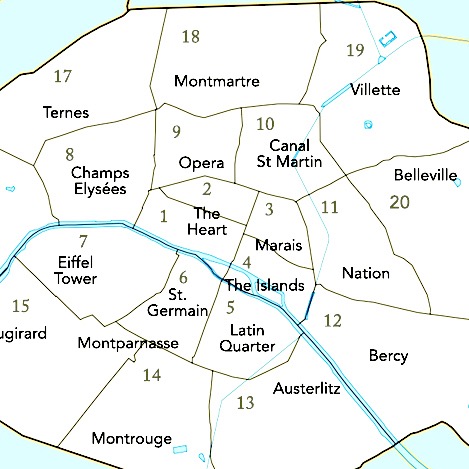 Paris Arrondissements
Paris Arrondissements |
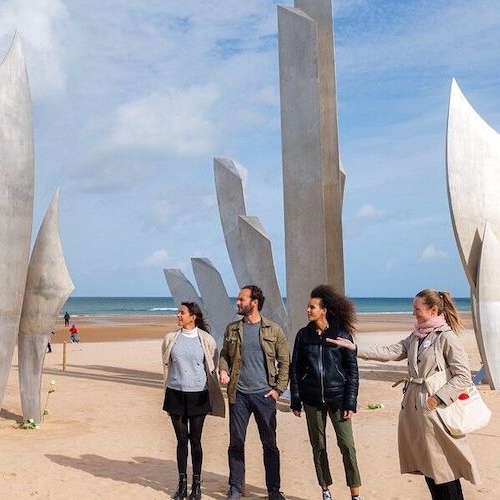 Historic D-Day Tours
Historic D-Day Tours |
Discover What's On When You're Here• January 2026 Things to Do…• February 2026 Things to Do…• Valentine's Day in Paris…• Month-by-Month Calendar… |
